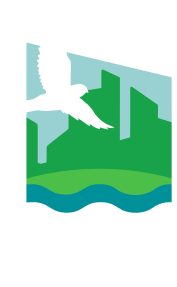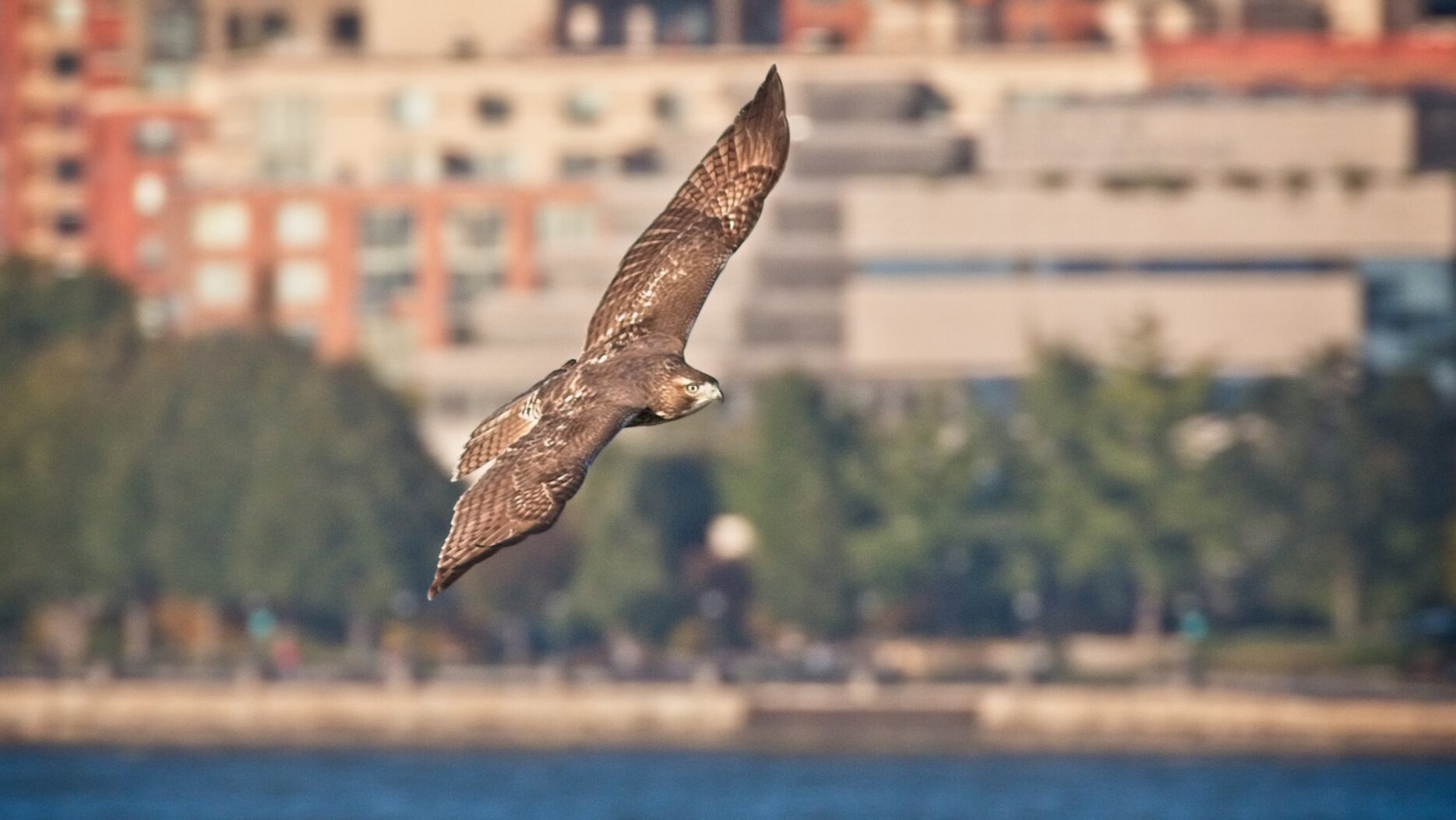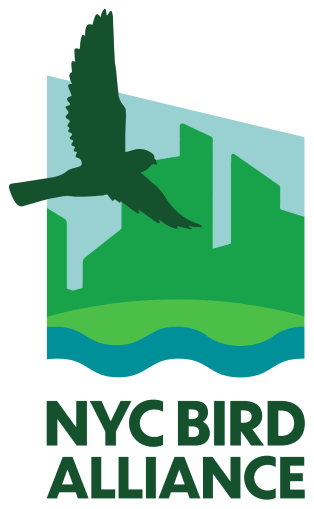RODENTICIDES
A Red-tailed Hawk captures a rat in Fort Tyron Park, Manhattan. Photo: Dave Bledsoe/CC BY-NC-SA 2.0
The methods we use to control rodents can have a devastating impact on our birds of prey. Rodenticides, also called rat poisons, are commonly used to control rodent populations. One type, called anticoagulant rodenticides, cause death by stopping normal blood clotting. Anticoagulant rodenticides pose a serious risk to rodent predators such as hawks and owls: Rodents that eat the poison bait may not die for several days, and during that time become slow and sick, easy targets for predators.
When birds of prey such as Red-tailed Hawks eat these rodents, they become poisoned themselves. If the bird is small enough, like a nestling, or has eaten enough poisoned prey, the toxin can be lethal. Rat poisons (anticoagulant rodenticides) were detected in 84 percent of dead birds of prey found in New York City, in research conducted by the Wildlife Unit of the New York State Department of Environmental Conservation.
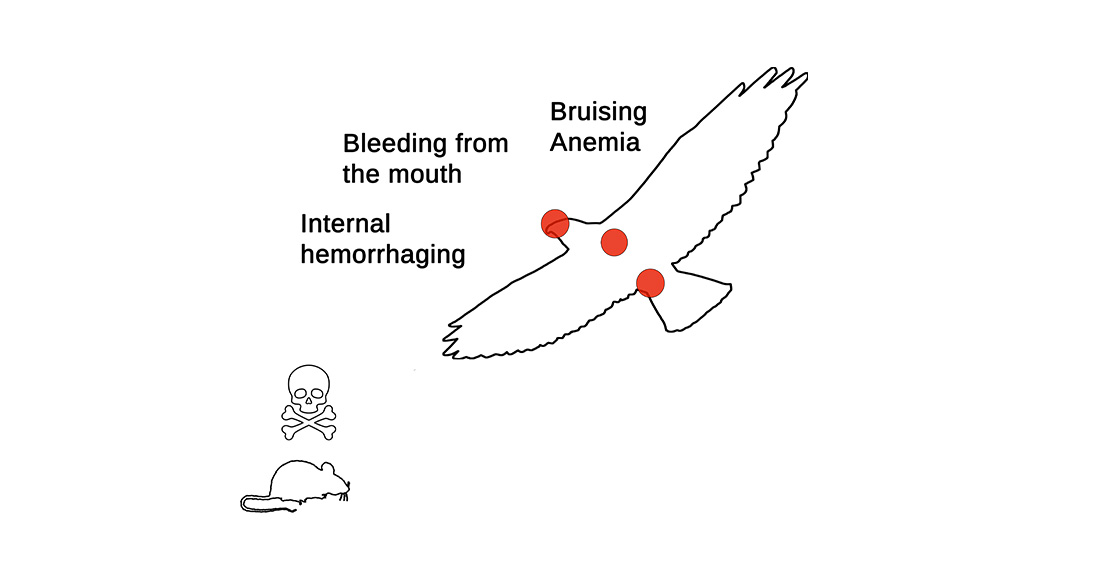 "}" data-trix-content-type="undefined" class="attachment attachment--content">
"}" data-trix-content-type="undefined" class="attachment attachment--content">Anticoagulant rodenticides, when ingested by birds of prey in a significant amount, cause interference with blood coagulation and spontaneous bleeding. Specific signs include bleeding from the mouth, internal hemorrhaging, widespread bruising, and anemia. Hatchlings are at a significantly greater risk of poisoning due to their small size. Common anticoagulant rodenticides include warfarin, diphacinone, chlorphacinone, brodifacoum, difenacoum, and bromadiolone.
Rodents Thrive Everywhere, Not Just in Parks
It's the ultimate goal of NYC Bird Alliance to have rodenticides banned in City parks. We are in close communication with the NYC Department of Parks & Recreation Wildlife Unit, encouraging and supporting them to stop using rodenticides during hawk breeding season in areas where birds of prey are nesting.
While we work closely with NYC Parks & Recreation to limit rodenticide use, word needs to spread beyond the parks. Landscaped grounds and gardens outside of buildings, as well as basement and trash areas in buildings, attract rodents. It is legal for building managers to hire pest removal professionals who use rodenticides, but there are better ways of controlling rodent populations that do not harm birds.
 "}" data-trix-content-type="undefined" class="attachment attachment--content">
"}" data-trix-content-type="undefined" class="attachment attachment--content">How to Get Rid of Rodents Without Using Rodenticides
Trapping and exclusion are the first lines of defense against rodents! Take preventative measures by removing what rodents need: food, water, and shelter.
- Keep all garbage and food in tightly sealed containers. Locking bins are best, as rats can easily tear through plastic trash bags.
- Do not leave food for pets or other animals outside.
- Remove standing water—fix leaky pipes and holes where water pools.
- Remove dense vegetation from around and on buildings. It provides ideal rat habitat.
- Seal openings to the building that are ½ inch or larger with stainless steel mesh and cement or products designed specifically to exclude rodents.
- If you still have rats, use non-chemical methods of control such as snap or electric traps. We do not recommend the use of glue traps.
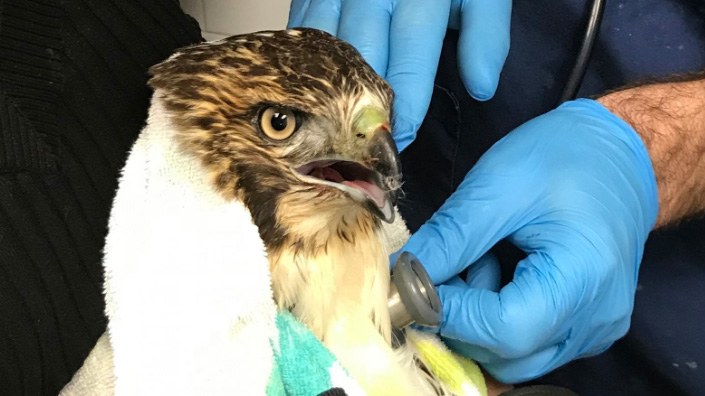 "}" data-trix-content-type="undefined" class="attachment attachment--content">
"}" data-trix-content-type="undefined" class="attachment attachment--content">What to Do If You Find a Poisoned Bird of Prey
A poisoned bird of prey requires immediate professional medical care if it is to survive. Be on the lookout for any birds of prey that are exhibiting symptoms of rodenticide poisoning. The most obvious symptom of a poisoned bird is bleeding from the mouth. A poisoned bird of prey will also exhibit lethargic behavior; it may close its eyes and/or not attempt to move when approached.
Note, however, that Red-tailed Hawks in New York City are quite accustomed to human beings and may not fly immediately even though quite close to people, particularly while feeding on prey. Juvenile birds may seem particularly “clueless” when it comes to humans.
If you find a possibly poisoned bird of prey in New York City, please call NYC Bird Alliance at 212-691-7483. Our organization will provide guidance over the phone and alert professional bird of prey rehabilitators to check on the bird. NEVER attempt to capture a large bird of prey unless you are a wildlife rehabilitator or are otherwise very experienced in handling raptors. Raptor talons and bills are very sharp and strong, and can easily cause injury. The bird may also easily become injured in the rescue attempt.
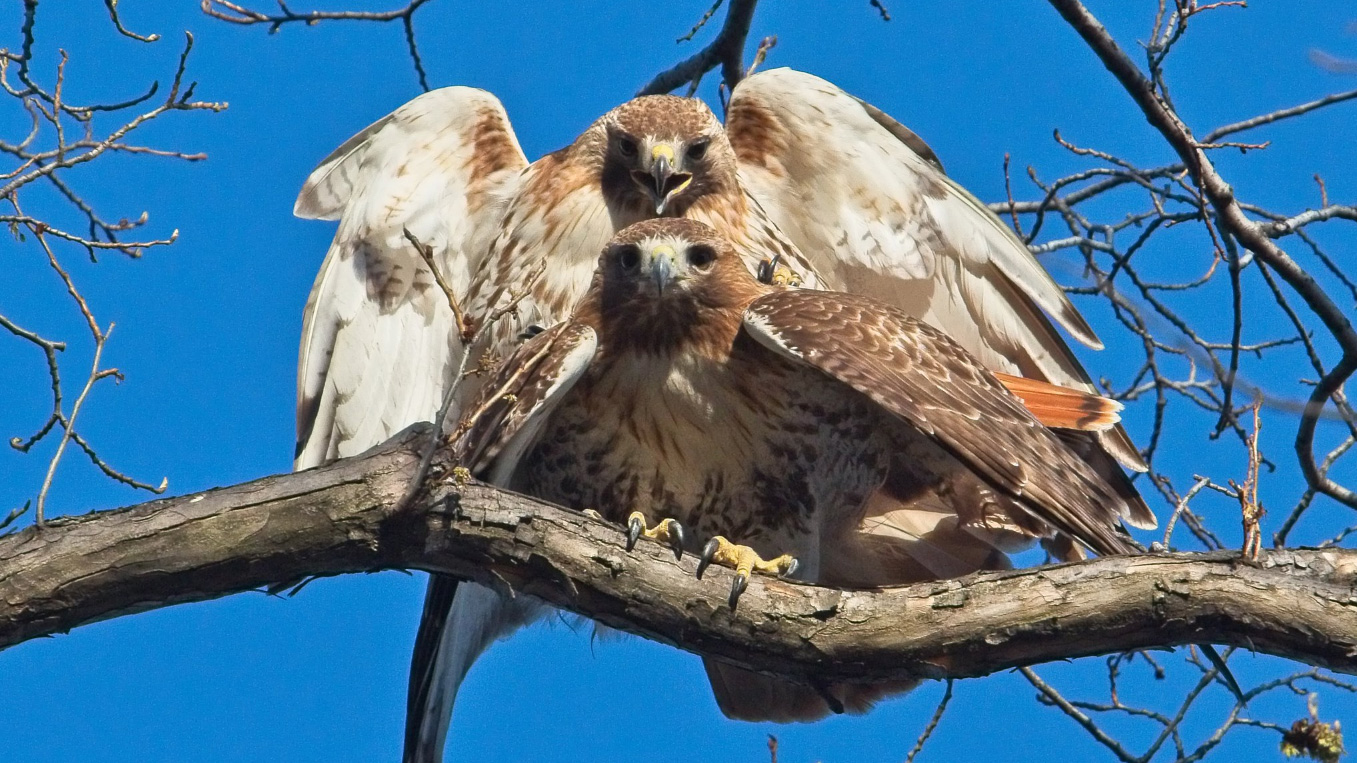 "}" data-trix-content-type="undefined" data-trix-attributes='{"bold":true}' class="attachment attachment--content">
"}" data-trix-content-type="undefined" data-trix-attributes='{"bold":true}' class="attachment attachment--content">Advocate for Non-poison Methods of Rodent Control
Ask your landlord or building manager about the use of rodenticides in your building. Be an advocate for the use of non-poisonous methods of rodent control and the safe use of rodenticides. If you need to hire a pest management professional, ask for and choose one that has experience with Integrated Pest Management (IPM) services. IPM is a prevention-based pest control method that is less harmful to animals and people.
Responsible Rodent Control Additional Resources
- NYC Rodent Academy
- NYC Rat Information Portal
- Safe Rodent Control Resource Center
- National Pesticide Information Center
- EPA Rodenticide Resources
Downloadable Rodent Control Resources
NYC Bird Alliance has published two new pamphlets on responsible rodent control: a brochure aimed at building tenants, and a rack card for rodent-control professionals. Download and print out the pamphlets and give them to your friends, neighbors, rodent control professionals, and building managers. Educate them about the dangers of rodenticides and how they can responsibly control rodent populations without harming our birds of prey.
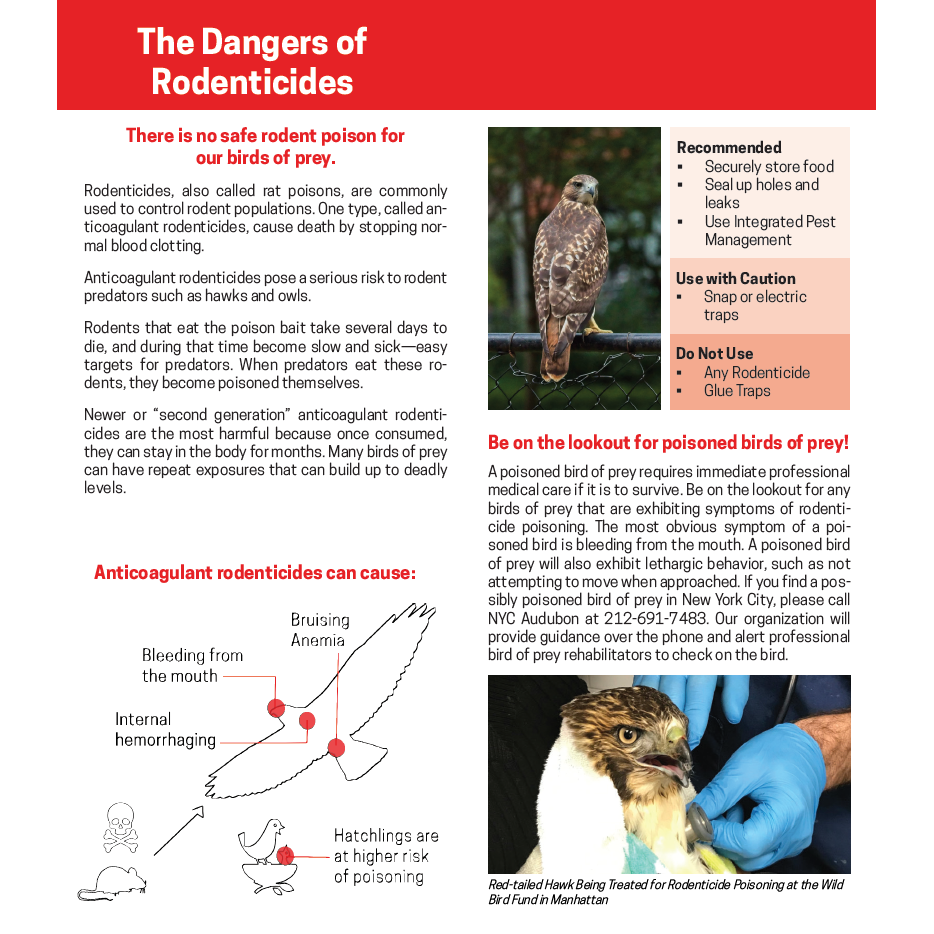
Responsible Rodent control: For Tenants
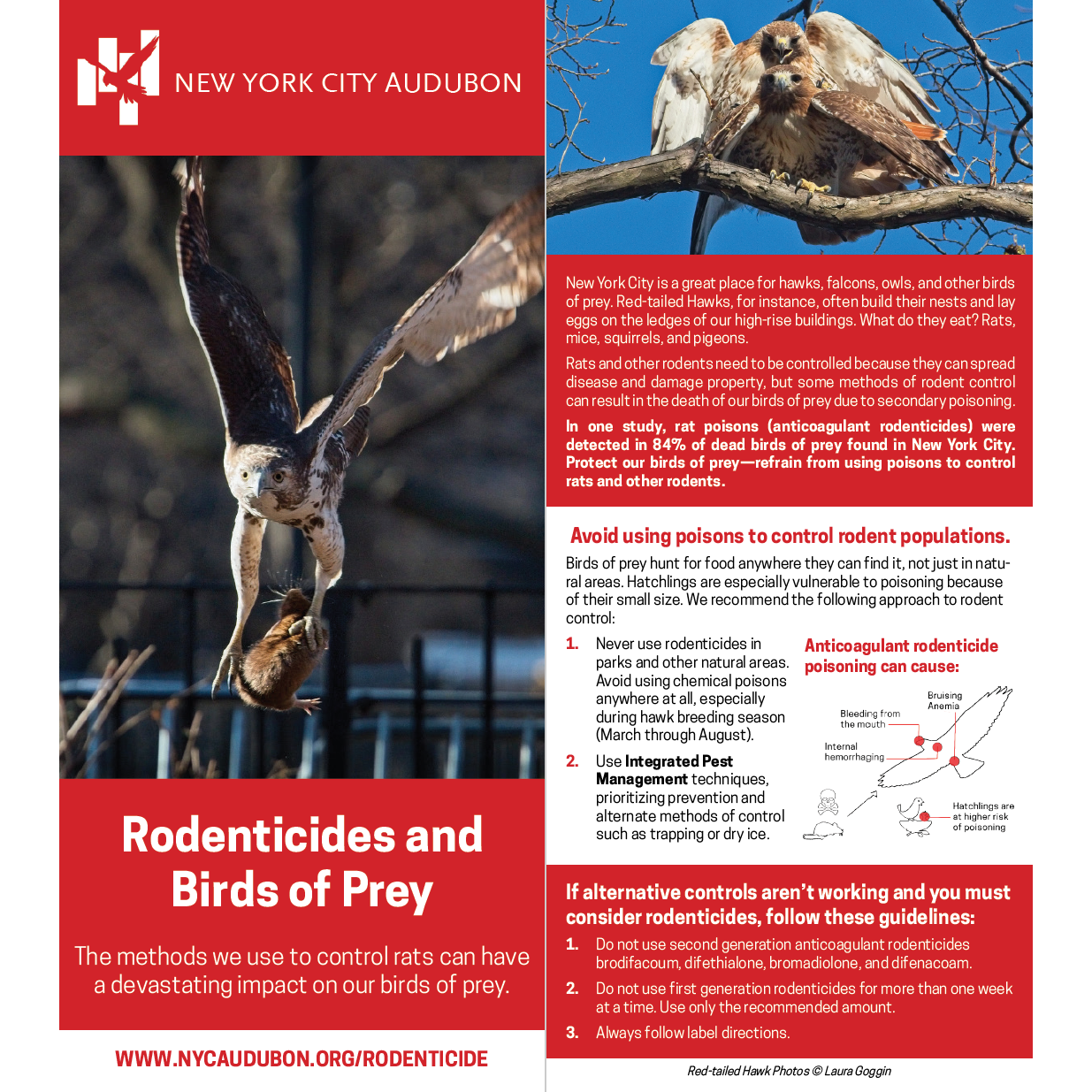
Responsible Rodent control: For rodent control professionals
